How to teach your child to use the potty and why your little one still poops in their diaper even though they can already pee in the potty?

Why Doesn’t My Child Want to Poop in the Potty Yet?
Before we move on to tips for potty training, it’s important to understand why a toddler might still prefer to poop in a diaper even though they’ve already learned how to pee in the potty. The answer isn’t simple—it can depend on several factors, both physical and emotional.
Body Awareness and Control
Children develop control over their bodily functions gradually. They usually learn to control urination first because it requires less physical coordination. Pooping, on the other hand, involves a different type of awareness—your child needs to recognize when their body is ready to have a bowel movement and then choose the right time and place to do it. The sensation of needing to pee is typically more urgent and easier for a child to identify, whereas the process of pooping is more complex and may take more time for a child to understand and manage.
Fear of the Potty
Some children may experience fear or anxiety about pooping in the potty. For a toddler just learning this new way of going to the bathroom, the potty might feel unfamiliar and uncomfortable. They may worry that something will go wrong, that they won't be able to fully control the process, or that the experience will be overwhelming. This fear is a natural response to a major change in their daily routine.
A Sense of Control
Preschool-aged children are beginning to develop a strong sense of independence and control over their own lives. Sometimes, refusing to poop in the potty is a way for them to express that independence. Even if they’ve mastered peeing in the potty, they may prefer the diaper for pooping as a way of maintaining control over their body and choices.
The Ritual and Comfort of the Diaper
For many toddlers, diapers represent familiarity and comfort. Every parent knows how much children value the sense of safety a diaper provides—not only for practical reasons, but also because it allows them to relieve themselves without worrying about the timing or location. That’s why some children may delay fully transitioning away from diapers, especially when it comes to pooping.

How to Teach Your Child to Use the Potty
Wait for the Right Time
Every child develops at their own pace, so there’s no need to rush the potty training process. Most children show signs of readiness between 18 months and 3 years of age, although some may need more time. Your child should be able to recognize when they need to go and communicate it in a way that allows you to respond. If your child doesn’t seem ready yet, it’s better to wait and try again later.
Create Positive Associations with the Potty
Potty training starts with building positive feelings about the potty itself. Try to make it something fun and interesting. Let your child choose a potty they like—maybe one that’s colorful, has characters from their favorite cartoons, or is shaped like an animal. It’s important for your child to feel that the potty is their own personal item.
Be Patient and Consistent
Potty training can take time and requires patience. Your child will need a while to adjust to this new routine. Focus on consistency—encourage them to sit on the potty every few hours, such as after meals, before bed, or right after waking up. Rewards like praise or small surprises can help keep them motivated.
Don’t Apply Pressure
It’s important not to pressure your child. If they resist or don’t want to use the potty, don’t force them. This can lead to even more resistance. Instead, give them time to learn at their own pace. Remember that potty training is more complex than it may seem, and setbacks are completely normal.
Make Potty Training Fun
Kids love to play, so try incorporating playful elements into potty training. You can tell potty-related stories, sing songs, or use children’s books that explain the process in a fun way. This helps your child view potty training as something joyful and natural, rather than a chore.
Encourage Independence
Children love the feeling of doing things on their own. When your child starts using the potty, praise every success. Encourage them to pull down and put on their underwear by themselves—this builds their confidence and is another step toward full independence.

How to Handle It When Your Child Refuses to Poop on the Potty
If your child still refuses to poop on the potty, there are a few strategies that might help overcome this challenge:
Try to Understand Your Child’s Emotions
Understanding why your child is afraid to poop on the potty is key. It may be related to fear of losing control or anxiety about a new experience. Avoid making fun of or pressuring your child when they refuse to use the potty. Instead, talk to them, be empathetic, and stay patient.
Allow Transitional Use of Diapers
Some children may still need the comfort of a diaper to feel safe. If your child refuses to poop on the potty, some families try a gradual transition—putting on a diaper just for pooping, while continuing to encourage peeing on the potty. The important thing is not to get discouraged but to see this as a stage in the learning process.
Summary
Potty training is a process that requires patience, empathy, and consistency from parents. Children develop at their own pace, and each stage of this journey can come with its own set of challenges. If your child has mastered peeing on the potty but still refuses to poop, don’t be discouraged. The key is to listen to your child, give them time, and create positive associations with the potty. Remember, every child is different, and success will come when your little one feels truly ready.

Recommended

Washable Training Pants "Seahorse"
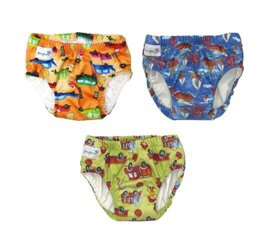
Training pants SET for a BOY -10%
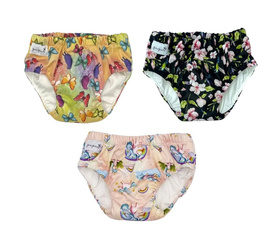
Training pants SET for a GIRL -10%
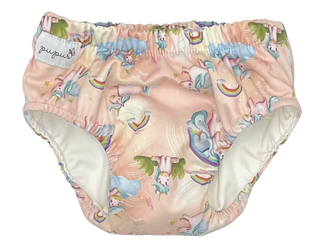
Washable Training Pants "Unicorns"
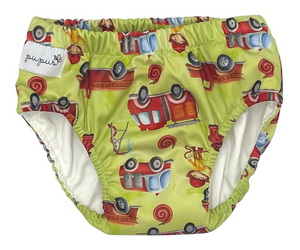
Washable Training Pants "Fireman"
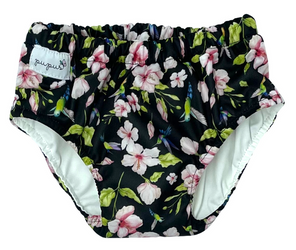
Washable Training Pants "Hummingbirds"

Training set for a boy -10%

Training set for a girl -10%

Washable Training Pants PUPPIES
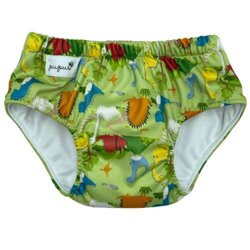
Washable Training Pants DIINOSAUURS

Washable Training Pants SPACE

